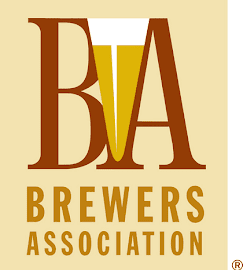 Hard Times Cafe proprietor Randy Barnette taps a cask of Clipper City's Winter Storm Imperial ESB just before the Winter Beer Tasting at his Woodbridge, Virginia restaurant.
Hard Times Cafe proprietor Randy Barnette taps a cask of Clipper City's Winter Storm Imperial ESB just before the Winter Beer Tasting at his Woodbridge, Virginia restaurant.
At least one other Hard Times follows an identical format: 10 or so beers, poured in 3 ounce samples, initially described by the respective brewery or wholesaler representatives, and then guessed at by the attendees.
Connectivity
The internet — as connective as it can be — can also be an impersonal medium. Thus it was a treat last evening to meet in person with a fellow beer blogger: "Virginia David" of the blog - Musings Over a Pint.
Dave recently received thanks from Lucy Saunders, author of the new cookbook: The Best of American Beer & Food. Why? Because he had actually taken the time to test a recipe before posting his — favorable — review.
[UPDATE 2007.12.19: His review of the Hard Times tasting here.]
More in the what they'll do for beer department
One of the beers to be tasted — Sierra Nevada's Celebration Ale — was unavailable from the local distributor. The beer had been on tap just the previous day. But ever popular, it had sold out.
Sierra's local representative spent a large portion of his day driving to stores throughout northern Virginia until he was eventually able to locate several cases of the beer. He arrived at the tasting just in time. We appreciated the effort ... and the beer.
Cask notes
Before a cask can be tapped, it needs to be broached through the tut in the top bung.
Think of it as the finger on the straw phenomenon. Hold the straw and the juice stays put. Release your finger and the juice flows out.

Hours before a cask is to be served — and ideally 24-48 hours beforehand, depending on the beer — the seal is broached on the top side of the cask.
The center of the bung has a slightly perforated inset, called a tut. That is pierced through, and the pressure is released. Riding on that pressure is often a geyser of beer, or, simply, an audible puff of carbon dioxode (CO2).
Either way, a porous plug called a spile — usually made of bamboo — is placed into the tut. Excess carbonation (and foamy beer) continues to evolve out of the cask, while the spile prevents any environmental 'things' from falling into the cask.
The cask is said to be 'working' at this point.
When equilibrium is reached (that is, not much foam oozing out through the spile), the cask is ready to be tapped. A more technical definition would be that at this point the carbon dioxide in solution in the ale is at the same partial pressure as the surrounding atmospheric carbon dioxide.
Time between spiling and serving allows turbulence to diminish, and yeast and proteins to settle out of the beer, where both would add haze and a rough bitterness. But when both have settled down to the space beneath the tap, the beer is said to be 'in condition' and is ready to be served.
A volume of carbon dioxide (CO2) dissolved in a beer is the volume that that carbon dioxide would occupy — if it could be removed from the beer at atmospheric pressure and 32 °F — as compared to the original volume of the beer.
English brewers shoot for 1.0 to 1.5 volumes of carbon dioxide as the level of carbonation in their cask ales. It yields a softer, less gassy pint.
American brewers go for more robust conditioning, usually 1.6 to 2.0 volumes of CO2. That yields a more active beer, and often a bit of spouting drama when the cask is spiled. Most US bottled beers contain 2.45 to 2.85 volumes of CO2.
Tuesday, December 18, 2007
Musings over a cask pint
Subscribe to:
Post Comments (Atom)












No comments:
Post a Comment
Comment here ...